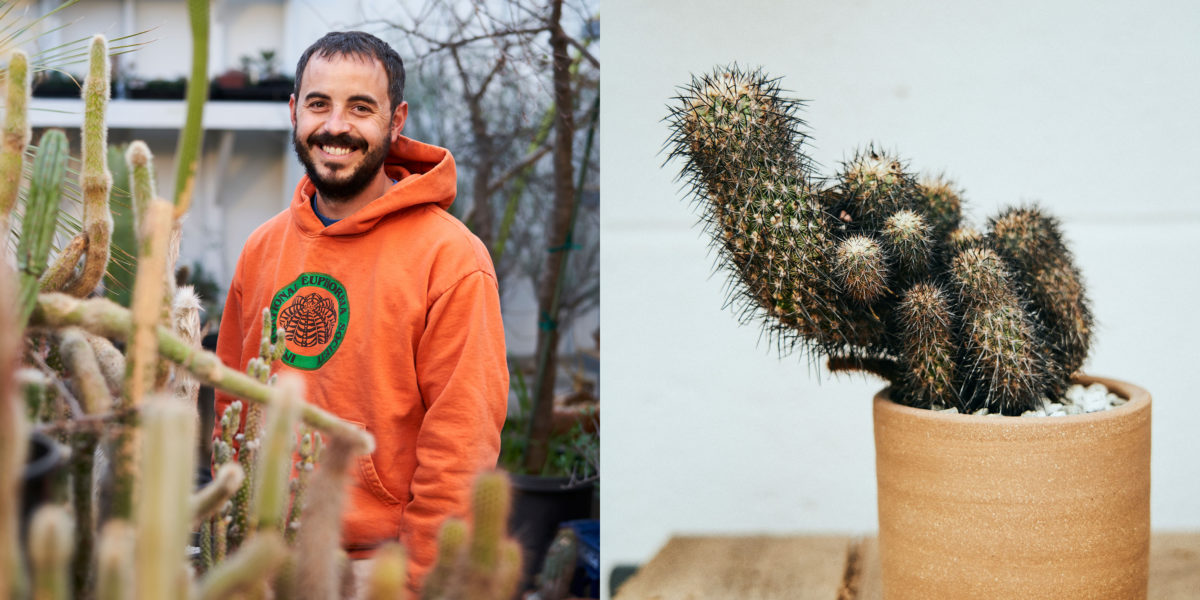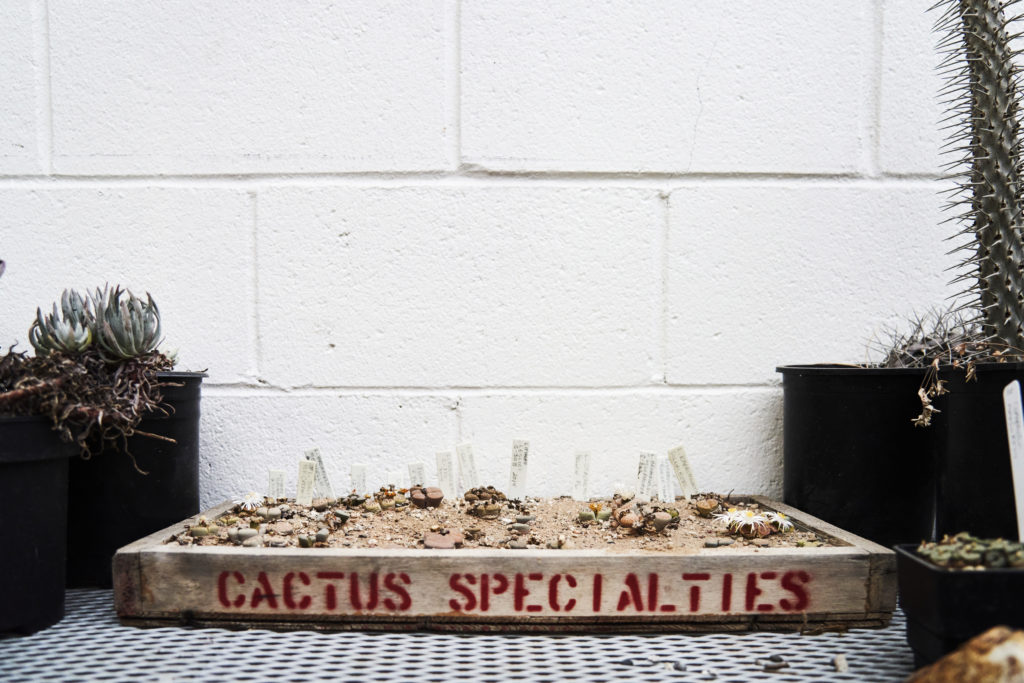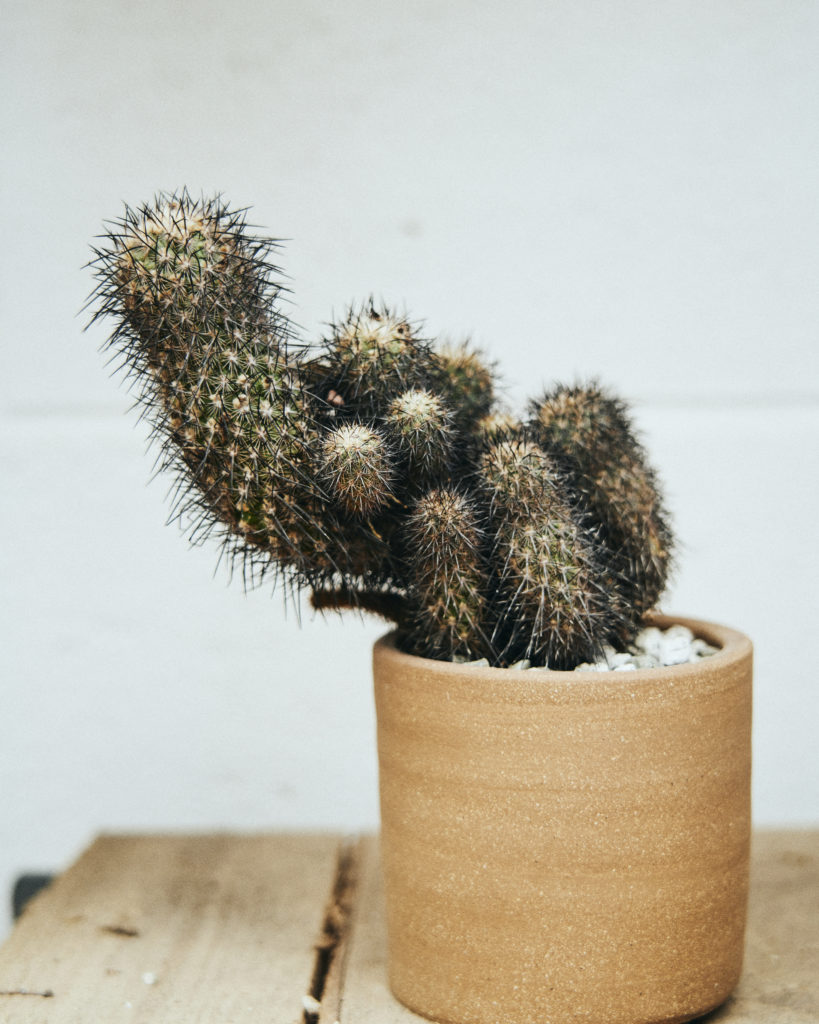
Everywhere There Are Spikes: An Exclusive Peek at One of the World’s Greatest Cactus Collections
Are you even ready for all of the cactus inspo coming your way? We think yes.

In a world of Instagram plantfluencers, pandemic plant parenthood newbies, trending Monstera, and famous florists, the Cactus Store in Los Angeles stands out for its lovingly obsessive, time-tested engagement with all things hardy and spiked. While most folks know founders Carlos Morera and Max Martin and crew from their little shop in Echo Park, the majority of their time is spent at a semisecret HQ studio in Atwater.
Housed in an old brick warehouse with an adjacent 2,000-square-foot greenhouse, their private collection of cacti lives and is tended by, as Martin calls him, “resident plant whisperer” Billy Ramirez. This appointment-only space has never been photographed, and we’re thrilled to share an exclusive peek inside this indoor garden of xeric wonders.

Lithops are a fascinating two-leafed diminutive succulent from southern Africa. Lithops are known for their ability to mimic the stones that they grow among. In this cultivation tray are 12 different species of Lithops.
Thomas J. Story
Everywhere there are spikes; in some spots there is fuzz and fur, and needles, and draping leaves. It’s an alien garden of cudgels, spheres, elephantine paddles and columns, fanning starbursts, and 87 shades of green—and pink, blue, purple, and red. To walk inside is to be overwhelmed by the sheer diversity of what reductively can look like a cartoon cactus in one’s imagination— and to be hyper aware of the delicacy of one’s skin. Cacti are so unlike us we can’t help but stare.

Thomas J. Story
Even to people who will never own anything beyond a $15 Home Depot ball cactus, the Cactus Store as a brand is many things: a shop selling cacti and beautiful cactus propagation gear, a signifier of a kind of art-adjacent cool, handsomely packaged cactus-care tools and soil, a lifestyle brand selling apparel and accessories (including “International Opuntioid Society” sweatpants, a “Honk if You Love Zygomorphic Flowers” sticker, and a $330 limited edition gardening gi that sold out online in seconds). They also offer landscape design services, counting among their clients John Mayer. Yes, that John Mayer, who visited the store, got bit by the xeric bug, and hired the crew to design a cactus garden at his house.
The deadpan stickers, shirts, and sweatshirts are as much an act of conservation as cool: “It’s a way to share our love of the plant without actually selling plants,” says Morera. Plus it’s practical. “People would come to the store on their way to the airport, and it’s just that much easier to buy a T-shirt than a cactus.”

Thomas J. Story
Cactus time might be the biggest differentiator—and connector—of all. “Cacti operate on a completely different time scale than people are used to,” says Morera, pointing out that many outlive their owners. “They’re the true survivors. The Atacama desert in Chile is the driest place on Earth. It’s where the Mars rover was tested, and you see nothing else alive but cacti.”
So maybe they’re not so alien after all. In a year where time stood still and survival was top of mind, our kinship with cacti only deepened. Let’s take a tour of this spiky microcosm.
